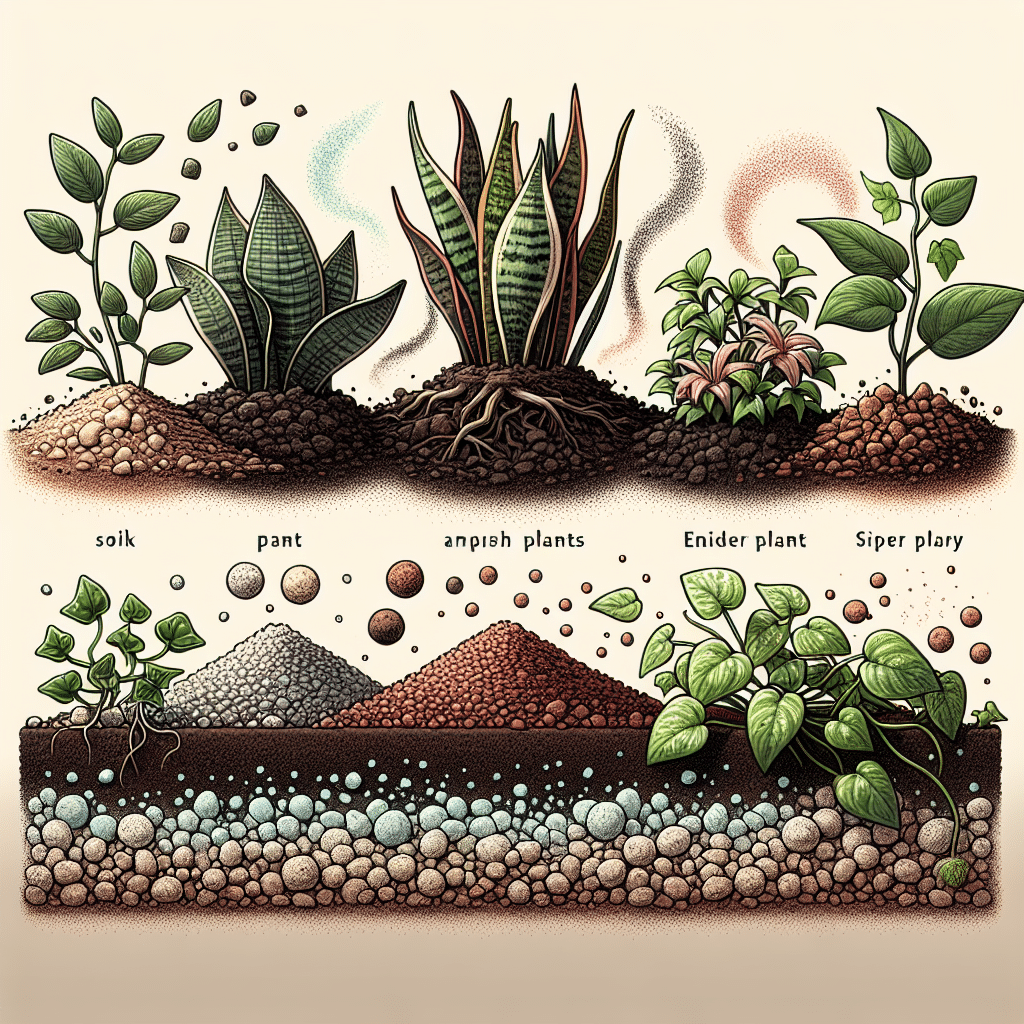Understanding Soil Composition for Air-Purifying Indoor Plants
When selecting soil mixes for air-purifying indoor plants, it’s essential to understand the basic components of soil. Good soil not only supports plant health but also promotes optimal air filtration. Soil composition typically involves organic matter, minerals, and a mix of porosity to allow water drainage and air circulation. Here are the critical components:
1. Organic Matter
Organic matter improves soil structure and fertility. It includes decomposed materials such as leaf litter, compost, and peat moss.
- Peat Moss: Excellent for moisture retention. However, consider sustainability; look for alternatives like coconut coir.
- Compost: Rich in nutrients and beneficial microorganisms, compost aids plant growth and enhances soil health.
2. Mineral Components
Minerals provide essential nutrients to plants.
- Perlite: This volcanic glass lightweight material improves aeration and drainage. It is ideal for mixing with heavier elements.
- Vermiculite: Similar to perlite but absorbs more water. Good for moisture retention, it’s often used in mixes for plants that prefer a slightly wetter environment.
3. pH Level Adjustment
Most indoor plants thrive in a pH range of 6.0 to 7.0. Testing your soil’s pH using easy-to-use kits ensures you’re meeting plants’ needs.
Recommended Soil Mixes for Specific Air-Purifying Plants
Different plants have specific soil requirements, making tailored soil mixes vital for their health.
4. Snake Plants (Sansevieria)
Mix Ingredients: 40% potting soil, 30% perlite, 30% sand
Why It Works: Snake plants prefer fast-draining soil to prevent root rot. The sand adds excellent drainage properties while the potting soil nourishes the plants.
5. Pothos (Epipremnum aureum)
Mix Ingredients: 50% potting soil, 30% perlite, 20% orchid bark
Why It Works: Pothos thrive in variably moist conditions but need excellent drainage. The orchid bark creates air pockets, preventing compaction.
6. Spider Plants (Chlorophytum comosum)
Mix Ingredients: 40% potting soil, 30% compost, 30% perlite
Why It Works: Spider plants adapt well to various conditions, but a mix that retains moisture while providing good drainage enhances their robustness.
7. Peace Lilies (Spathiphyllum)
Mix Ingredients: 50% peat moss, 30% potting soil, 20% vermiculite
Why It Works: Peace lilies enjoy moisture-rich environments. The peat moss retains moisture, while the vermiculite adds aeration.
8. Areca Palms (Dypsis lutescens)
Mix Ingredients: 50% potting soil, 30% perlite, 20% coconut coir
Why It Works: Areca palms like humid conditions with good drainage. Coconut coir retains moisture effectively while ensuring proper drainage.
Soil Mixes for Beginners
For novice plant owners, ready-made soil mixes designed for specific plants exist, often providing well-balanced nutrients and drainage.
- General Potting Mix: Ideal for various indoor plants; contains a blend of peat moss, compost, and perlite. It’s versatile and easy to work with.
- Cactus and Succulent Mix: This soil is perfect for those intending to keep air-purifying succulents. Its high sand and perlite ratio ensure excellent drainage.
Enhancing Soil Quality with Additives
Adding certain materials can enhance the soil quality further.
9. Activated Charcoal
Using activated charcoal in your soil mix can help eliminate odors and toxins, improving overall air quality. It absorbs excess moisture, preventing root rot.
10. Earthworm Castings
Rich in nutrients, this organic fertilizer not only provides plants with nutrition but also improves soil structure. Add 10-20% to your existing soil mix.
11. Beneficial Microbes
Incorporating microbial inoculants can enhance plant growth. These beneficial microorganisms help break down organic matter, releasing nutrients in a plant-available form.
Creating Your Custom Mix
When creating a custom soil mix for your air-purifying indoor plants, it’s vital to consider their specific needs.
- Plant Type: Determine the watering habits of your plants. Do they prefer moist soil or well-drained conditions?
- Container Type: Ensure that your pot has good drainage holes. Avoid water accumulation for plants that prefer drier conditions.
- Climate: Humid environments may require less moisture-retaining material, while drier homes may benefit from more moisture-retentive components.
Soil Mix Maintenance
Maintaining soil quality is crucial for sustained plant health.
- Replenishing Nutrients: Top-dress the soil with organic fertilizers every few months.
- Monitoring pH Levels: Regularly check and adjust the pH as necessary.
- Repotting: Every 1-2 years, consider repotting your plants with fresh soil to replenish nutrients and ensure healthy growth.
Soil Drainage and Its Importance
Proper drainage is crucial for the health of any indoor plant. Good drainage helps prevent root rot, which can be a significant issue for many air-purifying plants.
- Pot Selection: Choose pots with drainage holes. Terracotta pots are particularly good as they are porous and help wick moisture away from roots.
- Layering: Consider adding a bottom layer of stones or gravel in the pot. This enhances drainage while keeping the soil above it from becoming too compact.
Conclusion on Soil and Indoor Plants
Caring for air-purifying indoor plants involves understanding their needs, especially regarding soil composition. By selecting or creating the right soil mix, plant enthusiasts can ensure healthy growth and maximize the air-cleansing benefits that these verdant companions offer. Each plant has unique requirements, and customizing your mix can lead to a thriving indoor garden that beautifies your space while purifying the air. Knowing the right ingredients and ratios will contribute significantly to the success of your indoor gardening endeavors.
